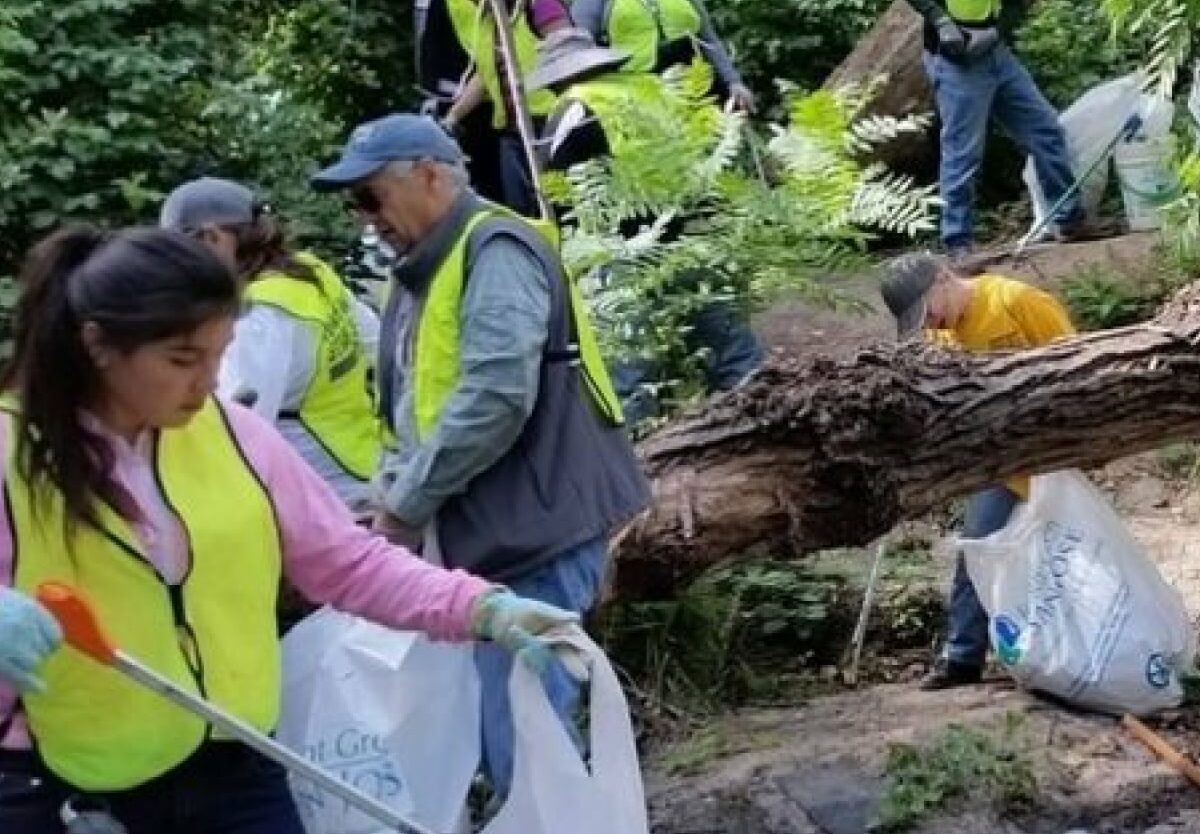National River Cleanup is a national day of action on May 16 this year to clean up garbage and debris from our rivers and watersheds. Since 1991, American Rivers has enlisted the help of over 1.3 million volunteers who have participated in thousands of cleanups around the country, spanning over 261,000 miles of rivers and collecting more than 32.5 million pounds of litter and debris.
Participate in a socially distanced cleaning in your neighborhood and nearby natural places this May. Invite your family, friends, and neighbors to participate. Prevention of pollution begins in our own homes. Trash can make its way into the bay through storm drains, creeks, and rivers.
History of National River Cleanup Day
River contamination has been an issue for a long time. According to the most current U.S. Environmental Protection Agency, surveys on national water quality, over half of our rivers and streams, as well as more than one-third of our lakes, are filthy and unsafe for swimming, fishing, and drinking.
Although there is no documented history of river cleaning, in 1991, an organization named American Rivers started cleaning up rivers across the country with the help of over 1.3 million volunteers, covering over 261,000 miles of river and collecting more than 32.5 million pounds of litter and debris. The Hudson River, which flows from north to south predominantly through eastern New York, is one of the polluted rivers. It starts in upstate New York’s Adirondack Mountains and runs south through the Hudson Valley to the Upper New York Bay between New York City and Jersey City.
Between 1947 and 1977, General Electric polluted the Hudson River by releasing polychlorinated biphenyls (P.C.Bs), which had a variety of negative impacts on wildlife and people who ate river fish. Other types of pollution, such as mercury contamination and cities releasing untreated sewage, have also contributed to the river’s woes.
In response to the contamination, activists protested in a variety of ways; for example, musician Pete Seeger organized the Hudson River Sloop Clearwater and the Clearwater Festival to raise awareness of the issue. Across the country, environmental agitation resulted in the passing of the federal Clean Water Act in 1972 and the Toxic Substances Control Act in 1976. In 1984, the federal government declared the contaminated section of the river, which stretches about 200 miles (320 kilometers), a superfund site. In 2016, a humpback whale was sighted swimming in the Hudson River west of 63rd Street in Manhattan, indicating that water quality is improving. Whales have become a common sight in the river since then.
National River Cleanup Day timeline
Through lobbying, on-the-ground projects, and an annual America's Most Endangered Rivers campaign, American Rivers Organization conserves and restores more than 150,000 miles of rivers.
This initiative is established in 1991 to assist in keeping America's rivers clean and free of trash.
In October, a river cleanup is held in small Easley, Missouri, on the banks of the Missouri River.
The initiative starts with a 10-minute garbage pick-up challenge in Europe.
National River Cleanup Day FAQs
What is the significance of rivers in the establishment of the United States?
Rivers were natural highways that crisscrossed the various backcountry territories, allowing raw commodities such as lumber, fur, food, and other supplies to get to the towns and the country’s key commerce hubs — Philadelphia, Boston, and New York.
Which state in the United States has the most rivers?
Alaska has the most rivers in the United States. It features roughly 12,000 rivers and a total water area of around 94,743 square miles.
What is the United States' longest free-flowing river?
The Yellowstone River is the longest free-flowing river in the lower 48 states, cutting diagonally northeast across Montana for over 700 miles to its confluence with the Missouri River in North Dakota.
National River Cleanup Day Activities
Clean up the rivers
The first goal is to clean up and educate people about the problem by displaying the rubbish. Dispatch whether it's in or near the river where you grew up, reside, or work.
Educate and motivate kids
The second goal is to educate and motivate kids (from elementary schools to colleges) about the issue. And then, allow them to have an eye-opening experience as they pick up rubbish for the first time.
Organize team building
Organize teambuilding cleanups in conjunction with workshops on how to eliminate single-use goods at home, work, and other locations. This may result in the formation of a network of organizations, researchers, and others to develop cross-border solutions.
5 Interesting Facts About River Cleanup
A million volunteers
Over 1.3 million volunteers who have helped with thousands of cleanups across the country have been recruited.
Waterways are covered
More than 205,500 kilometers of waterways have been cleaned up.
More than a million pounds of trash
More than 17 million pounds of litter and debris have been recovered from America's rivers and streams as a result of these cleanups.
2,500 pounds of trash
In just three hours, volunteers were able to remove nearly 2,500 pounds of rubbish from the Jordan River.
Half of all trash is food packaging
Food packaging accounts for about half of all trash in the United States, as the vast majority is not recycled, and they are frequently found clogging shorelines and rivers.
Why We Love National River Cleanup Day
Rivers are a significant source of water
Rivers continue to be a vital source of drinking water for many towns and communities. Before it reaches our tap, the water is cleansed; however, if our rivers stay filthy, the water cannot be cleansed to the point where it is safe for human consumption.
Important habitats for animals and plants
Rivers are thought to be important habitats for animal and plant species. Rivers are home to a diverse range of animal and plant species. However, due to the rapid deterioration of our waterways, these species are critically endangered.
Social and economic benefits
Less waste means more recreational opportunities along rivers, including clean and safe walking and running pathways for the community. Tourists will be drawn in as recreational activities expand, so both the economy and the well-being of the community are impacted.
National River Cleanup Day dates
| Year | Date | Day |
|---|---|---|
| 2024 | May 18 | Saturday |
| 2025 | May 17 | Saturday |
| 2026 | May 16 | Saturday |



























